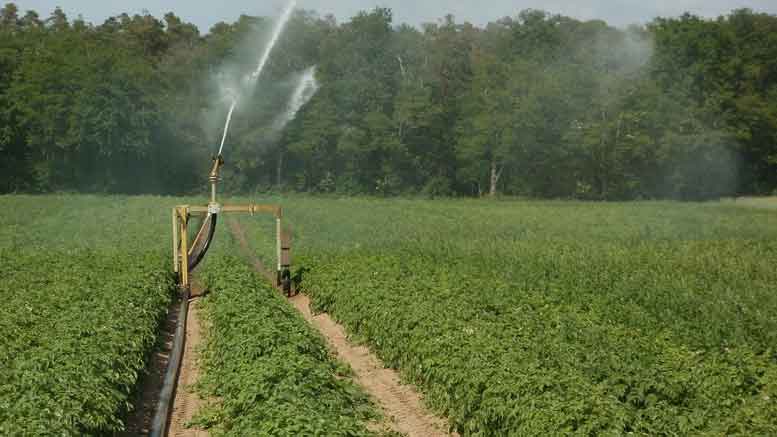|
Click to listen to this article
|
By Dale Lathim
Old axioms last over time because there is a whole lot of simple truth in each one. This applies to those in the potato industry, as well, and we have had two very stark examples this year. Both are somewhat related, and either should have warned growers and processors of what to expect.
The first axiom is “seed will never be a limiting factor on planted acreage.” The thought behind this has always been that seed spacing can be increased to allow lesser amounts of seed to plant greater acreages. Also, tubers that have not been sprout nipped in storage can be used in some instances, which again, will allow more acres to be planted. And finally, seed can be cut into smaller pieces, which will not always result in the best stands but will nonetheless allow limited seed to be planted on more acres. So, last winter when we heard repeatedly that there is no way growers can overplant for the 2023 crop year, we all should have taken note and said “hold on, let’s rethink this before too many acres are planted.” I will admit that I bought into this sentiment as it rolled through the potato community, and I stated publicly a few times that this may be the exception to that rule. But, oh, how wrong I was.
Not only did the shortfall in seed, which we were told was a minimum of a million-cwt shortfall, turn into no shortfall at all, but we blew right by the 2022 planted acreage in the Pacific Northwest by more than 52,000 acres. Granted, 40,000 of those acres are in Idaho, but nonetheless all growing areas in the region contributed to the problem to some degree. Growers had dollar signs in their eyes as they saw the high prices being paid for open potatoes last winter and all wished they had a few opens to sell. Well, now they do, but the price will be only a small fraction of what it was last winter.
Processors were not immune from this phenomenon, either. Even late in the planting season, some were looking for more acres to put under contract to be sure they had enough potatoes come harvest time – in some cases, even paying a premium to get potatoes signed up on the contract.
The second axiom that should now be considered rock solid and not just an old wives’ tale is “never plant open potatoes when others are saying it is a good idea to have them.” I can kind of understand this one if you bought into the first axiom of seed being short and thus, acres being short, as well. But even though they go hand in hand, if your neighbor is planting open potatoes, it is very likely that others are doing the same. So I suggest we all adopt a new saying, and that is “do the opposite of what the masses say is a good thing to do in the coming year.”
Now that we have covered why we are in this situation, the question becomes what are we going to do about it? Although it appears that yields will come in a little under average, they are still high enough with the extra acres to create a huge surplus of potatoes that will have a hard time finding a market at profitable levels. This will also weigh heavily on contract pricing for next year as well as the number of acres processors will need, as there should be plenty of storage potatoes to carry over into next summer.
With the very real likelihood of contract reductions at a couple of processing companies and very little hope of contract prices covering the added inflation growers will experience next year, my suggestion is that growers immediately start planning on 20-25 percent reductions in your planted acres. Only put potatoes on your best ground and do not plan on any type of rebound in the open or fresh markets. Processors will have plenty of potatoes, considering the carryover already mentioned, and therefore, any off-quality potatoes will be more likely subject to rejection or serious price reductions. Thus, by putting potatoes only on your best land, you can hope to avoid any of the issues that sometimes creep up when you use marginal ground.
Along this line of thinking, annual contract growers, in particular, must seriously plan on the reduction. For those processors who may be reducing contract volume, it is doubtful that much, if any, of the reductions will be with their special arrangement contract growers. Thus, the burden will be pushed to their annual contract growers. If you get an opportunity to sign a contract with any processor, I would seriously consider taking the offer rather than waiting on others to develop.
While we have endured three challenging crop years with COVID, a heat dome and high inflation, 2023 will push its challenges into 2024. Be prepared and keep informed of the latest developments that happen over the winter. We are always here to help you if you need an update in between our meetings or general member updates.



